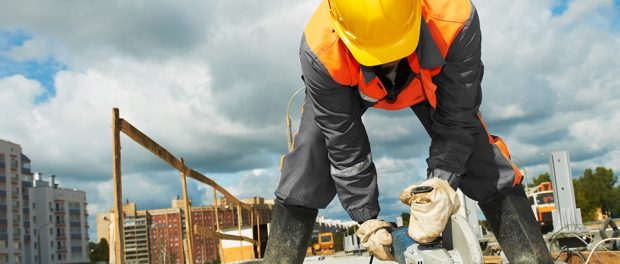UK construction output falls with biggest decline since March 2013

New figures have revealed the UK’s construction output continued to fall in February.
The latest Office of National Statistics (ONS) data states output fell by 1.6% compared with January, caused by a 9.4% fall in infrastructure new work.
When compared with February last year, output has declined by 3.0%, the biggest month-on-year fall since March 2013.
ONS said anecdotal evidence suggests the adverse weather conditions across Great Britain could have potentially contributed to the decline, “although it is difficult to quantify the exact impact on the industry”.
Mark Robinson, the Chief Executive of Scape Group, said the data shows the UK’s construction sector is “continuing to face difficulties. Anecdotal evidence is pointing towards a dip in productivity and output as a result of the adverse weather conditions experienced in the early months of the year, with a number of construction sites and manufacturers unable to operate during this period,” he said. The contraction in both total new work and repair and maintenance is troubling. The upgrades required to our vital infrastructure and services should also not be underestimated. Inadequate roads, rail, energy, schools, hospitals and housing significantly hampers the country’s productivity. With only 12 months remaining in our Brexit negotiations, it is vital that the UK’s assets and infrastructure are fit for purpose, attract inward investment and create a strong independent economy.”
Mr Robinson added a fall in new work to £8,211 million is largely due to a decrease in private commercial new work and public new work. It is important that this decline is reversed, especially for the public sector where demand for services is only going to increase. One key example is the requirement for secondary school places which will reach 435,646 by 2020/21. The government needs to work collaboratively with the public and private sectors to support funding for both new projects and upgrades.”
Blane Perrotton, Managing Director of the national property consultancy and surveyors Naismiths, said “only so much” of February’s decline can be explained by the poor weather. Despite the modest upward revision to January’s figures, the message from the first two months of the year is clear – activity is slowing and the brief burst of momentum seen at the end of 2017 is now all but forgotten,” he said.
“The bright spots are getting fewer and further between. Housebuilders continue to shine as low interest rates and a chronic shortage of homes keep demand burning bright. Infrastructure too offers some hope, with London’s three flagship projects – the Thames Tideway Tunnel, Heathrow Q6 and Crossrail – together committing to more than £1.7bn of capital expenditure in 2018-19. But these strong points are increasingly looking like outliers, as commercial property demand cools and developers concentrate on completing existing projects rather than commissioning new ones. Though the economic backdrop remains benign – with low interest rates, readily available finance and a resurgent Pound bringing down the cost of imported construction materials – the construction industry’s magic ingredient, confidence, remains scarce.
“While order books remain strong outside London, softening demand and investor caution in the southeast mean that, for now, the industry as a whole remains caught in an awkward limbo.”
